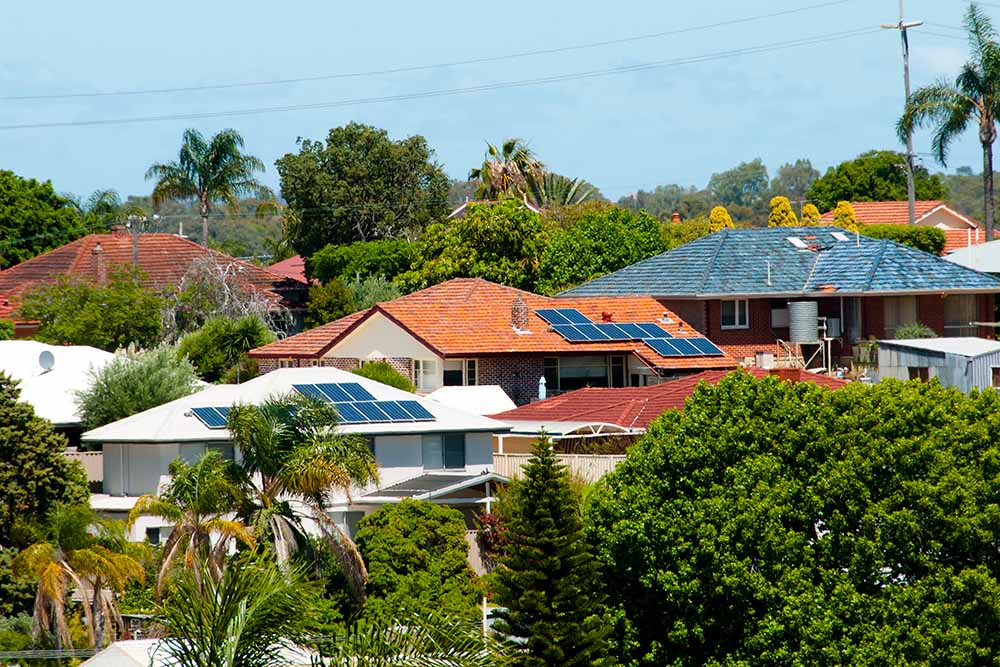

New South Wales solar households on the Ausgrid network can expect to pay an average of $3.50 a year in rooftop PV export tariffs starting in July, as the poles and wires company forges ahead with the roll out of the so-called “sun tax.”
In its draft decision on solar tariffs, published on Monday, the NSW Independent Pricing and Regulatory Tribunal has recommended keeping the benchmark range for solar energy fed into the grid at 4.9 to 7.4 c/kWh – much the same as the benchmark range set for 2024-25 of 4.9 to 6.3 c/kWh.
This is relatively good news in the context of rapidly plunging feed-in tariffs – Victoria recently slashed its minimum feed-in tariff from 3 cents per kilowatt-hour (kWh) to a minuscule 0.04c/kWh.
But in NSW, IPART this year also has to weigh up the impact of controversial new export tariffs – “charges and rebates applied by network providers and faced by retailers when their customers export solar to the grid” at times of peak solar generation.
Networks in NSW have been able to charge for solar exports to grid since July last year, but only for customers who opted in, and only for Ausgrid customers.
From July this year, Ausgrid will apply export tariffs to all solar households with smart meters and customers are not able to opt out.
According to IPART, almost all of Ausgrid’s more than 300,000 solar exporting customers are expected to be assigned a network export tariff in the 2025-26 financial year.
What does all this mean?
IPART says it has factored export tariffs into its all-day benchmark range for 2025-26 by reducing the minimum of the benchmark range by the estimated net impact on Ausgrid customers.
It has not adjusted the maximum end of the range because there will be no impact for many customers (particularly in the Endeavour and Essential networks).
Using this methodology, the average cost of these network tariffs is estimated to be “a few dollars per year,” reducing the bottom end of the solar feed-in tariff benchmark range by around 0.14 c/kWh.
And as the table above shows, each network has a “basic export level” which is a threshold up to which customers can export to the network with no charge. For Ausgrid that’s 6.85kWh a day.
“Based on our sample export data from 2023-24 … and Ausgrid’s forward estimates of export charges and rebates for 2025-26, we have calculated the average impact per customer in our sample would be around $3.50 over the year for Ausgrid customers in 2025-26, or negative 0.14 c/kWh,” the report says.
IPART has also worked out what how the export tariffs round out across the time-dependent benchmark ranges, in the table below.
In the below table, IPART has set time-dependent feed-in tariff benchmarks.
All told – and depending on the size of solar system and usage patterns – the impact of the full force of the “sun tax” on NSW households could actually wind up being less dramatic than the changes facing homes in Victoria, when that state’s new ultra-low solar FiT kicks in come July.
Ultimately, both approaches aim to change consumer behaviour by incentivising more solar self-consumption during periods of peak generation, or encouraging investment in battery storage to store unused solar for later in the day.
In NSW, the regulator notes that customers with batteries may be offered higher feed-in tariffs as part of special retailer deals – or virtual power plants – if they are able to export their stored solar electricity in line with rising demand or in response to market events.
Exports in the late afternoon and evening are also likely to be worth significantly more than the all-day solar feed-in tariff benchmark – higher than 20 c/kWh in some cases (see above table).
For Endeavour Energy and Essential Energy, export tariffs are only being applied to new and upgrading solar customers and existing solar customers that opt in – and any customers can opt out.
Essential Energy has estimated that around 16% of exporting customers will be on its solar export tariff in 2025-26. Between July 2026 July 2028, all small customers who can export to the grid will be moved to an export tariff, with the option to opt-out remaining in place until July 2028.
Sophie is editor of One Step Off The Grid and deputy editor of its sister site, Renew Economy. Sophie has been writing about clean energy for more than a decade.
This post was published on February 24, 2025 3:41 pm
Iconic Australian hardware and garden store says it has reached 100 per cent renewables, with…
Data used to showcase the downward impact of renewable energy on power prices contained a…
Most so-called ‘community batteries’ are actually installed by electricity networks, but this local group managed…
Rising energy bills are driving a surge in complaints. The NSW Energy Ombudsman wants better…
Australians are often being misled when they try to make sustainable electrical appliance choices, and…
China EV giant bows to trend of offering "complete solutions" for home energy, with launch…